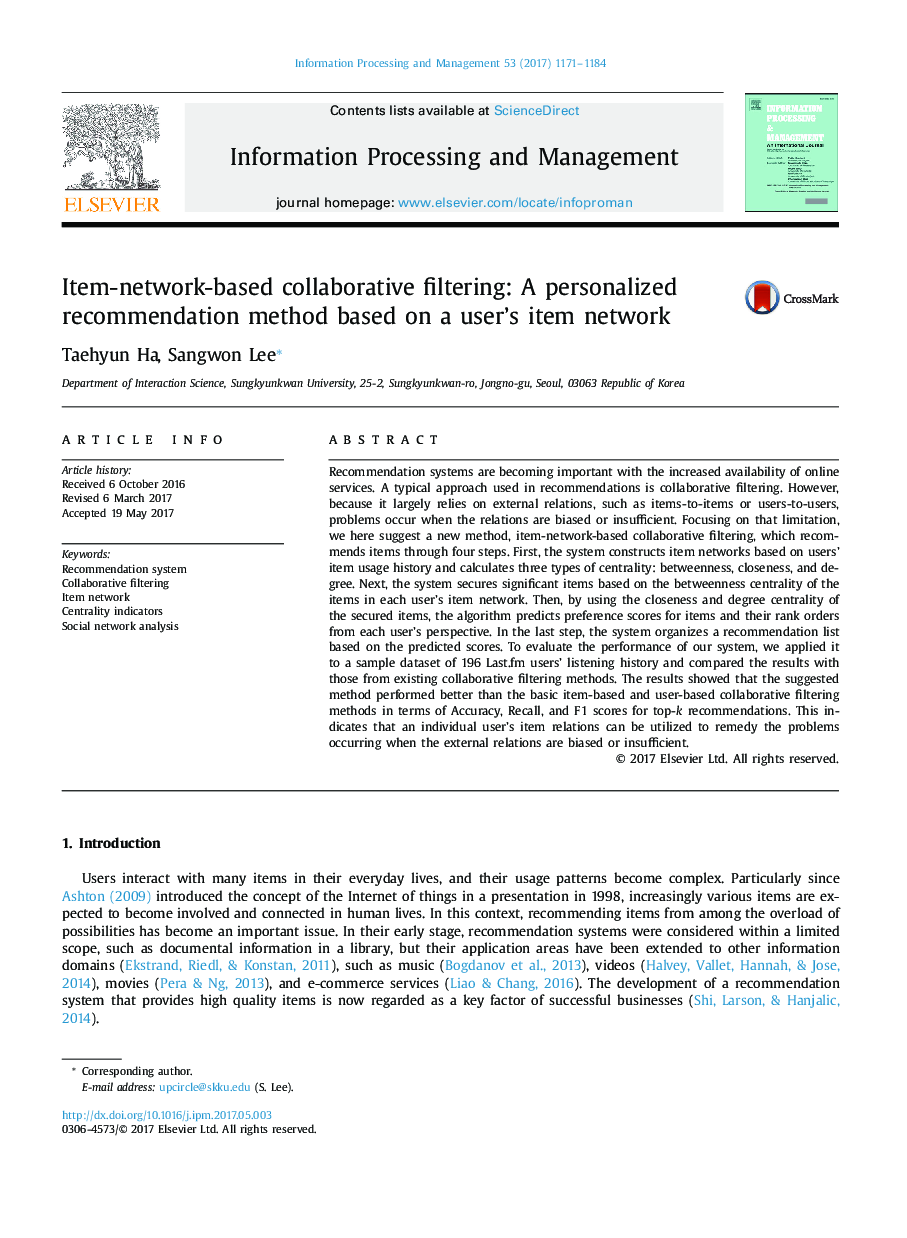| Article ID | Journal | Published Year | Pages | File Type |
|---|---|---|---|---|
| 4966402 | Information Processing & Management | 2017 | 14 Pages |
Abstract
Recommendation systems are becoming important with the increased availability of online services. A typical approach used in recommendations is collaborative filtering. However, because it largely relies on external relations, such as items-to-items or users-to-users, problems occur when the relations are biased or insufficient. Focusing on that limitation, we here suggest a new method, item-network-based collaborative filtering, which recommends items through four steps. First, the system constructs item networks based on users' item usage history and calculates three types of centrality: betweenness, closeness, and degree. Next, the system secures significant items based on the betweenness centrality of the items in each user's item network. Then, by using the closeness and degree centrality of the secured items, the algorithm predicts preference scores for items and their rank orders from each user's perspective. In the last step, the system organizes a recommendation list based on the predicted scores. To evaluate the performance of our system, we applied it to a sample dataset of 196 Last.fm users' listening history and compared the results with those from existing collaborative filtering methods. The results showed that the suggested method performed better than the basic item-based and user-based collaborative filtering methods in terms of Accuracy, Recall, and F1 scores for top-k recommendations. This indicates that an individual user's item relations can be utilized to remedy the problems occurring when the external relations are biased or insufficient.
Related Topics
Physical Sciences and Engineering
Computer Science
Computer Science Applications
Authors
Taehyun Ha, Sangwon Lee,
